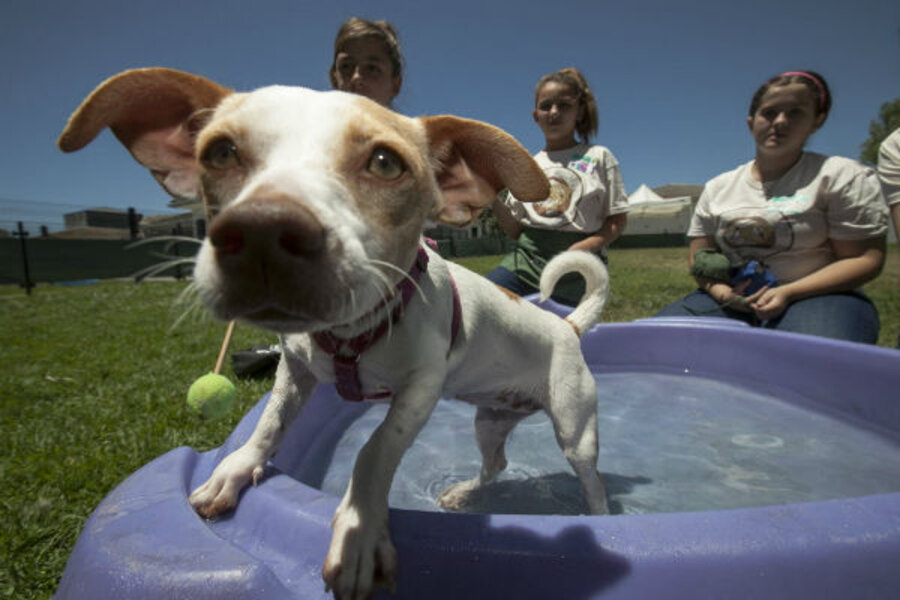Animal shelters overloaded in summer, but adoptions also go up
Loading...
| Los Angeles
Summer at animal shelters across the country means more animals, more work, more bills and more worries.
And there are sometimes fewer staffers, volunteers and donations to handle it.
At the majority of animal shelters in the country, kittens make up problem Nos. 1 through 10 every summer, said Dr. Kate F. Hurley, director of the Koret Shelter Medicine Program at the University of California at Davis Center for Companion Animal Health.
"Kitten season" starts in the spring and ends in the fall in most parts of the country — a single unspayed female cat can have up to two litters of four or more kittens each.
The Albuquerque Animal Welfare Department gets hundreds of kittens during the summer, but it "feels like millions," said director Barbara Bruin.
"People are more likely to get a dog fixed than a cat, more likely to microchip a dog than a cat and more likely to claim a dog than a cat. Cats are the throwaways and we end up with way too many litters," she said.
Many kittens die because they are brought in so young they have to be bottle-fed and there aren't enough hands, she said. Disease in younger kittens also takes a toll. "We lose a lot of kittens this time of year," Bruin said.
Yolo County Animal Services in Woodland, near the university, normally takes in about 150 cats a month. From May to October, though, that number jumps to 300, Hurley said. The Dumb Friends League, which operates shelters in Colorado, had 350 to 400 cats in February but 751 on June 1, said spokesman Chris Gallegos.
Adding to the population explosion at shelters are puppy litters, runaway dogs (kids leave doors and gates open), dogs hit by cars and dogs rescued from hot cars.
In the past, shelters in college towns would have a rush of abandoned pets when school let out, but that's been changing in recent years, Hurley said. There are a few owners who will dump their pets so they can go on vacation, but with that kind of owner, the pets are probably better off, Bruin said.
Extra animals don't mean more room, more staff or more money, Hurley said. "It's a huge challenge and it comes at the same time a lot of us think about our vacations."
Location can cause different sets of problems. June is the start of hurricane season, so in Florida that means extra feeding, cleaning and adoption events to place more animals and more time spent working in the rain and preparing for storms, said Janet Winikoff, director of education at the Humane Society of Vero Beach and Indian River County in Florida.
In some cities, shelters lose volunteers because students go home, snowbirds go north and helpers go on vacation. Some shelters are lucky and the number of volunteers goes up.
The Richmond (Va.) Society for the Prevention of Cruelty to Animals averages 350 volunteers between September and May and 415 from June to August, said chief operating officer Tamsen Kingry. "Much of this increase is due to college students and high schoolers spending time with us during their summer vacations," she said.
Lucky volunteers might be asked to work early or late to exercise animals when it's coolest, but most staff and volunteers have to deal with the heat if they are responding to cruelty and neglect cases, hauling equipment, mucking out stalls or doing other daytime chores.
Besides food bills and utility bills, summer medical costs go up at most shelters.
"Fleas and ticks are horrible in the summer, and this year is worse than ever because we had a mild winter that did not kill them off," said Whitney Jones, animal care manager at the Humane Society of Memphis and Shelby County, Tenn. "We purchase flea and tick medication in bulk to manage these costs, but yes, treating active flea and tick infestations does get pricey."
Medicine for heartworm — transmitted by mosquitoes — is another necessity, especially in damper parts of the country.
All of this comes while donations universally go down in the summer. But there is a bright side: Adoptions generally go up.
"We usually have an increase in adoptions, especially in recent years with the downturn in the economy," said Madeline Bernstein, president of the Society for the Prevention of Cruelty to Animals Los Angeles. "More people declined family vacations or big purchases (like a boat or recreational vehicle) and instead chose to adopt a pet."
Last year in Richmond, about 30 percent of the animals placed all year were adopted in June, July and August, Kingry said.
"Many families come to us during the summer because they tend to spend more time at home, and children are out of school and can bond with the new family member," she said.







